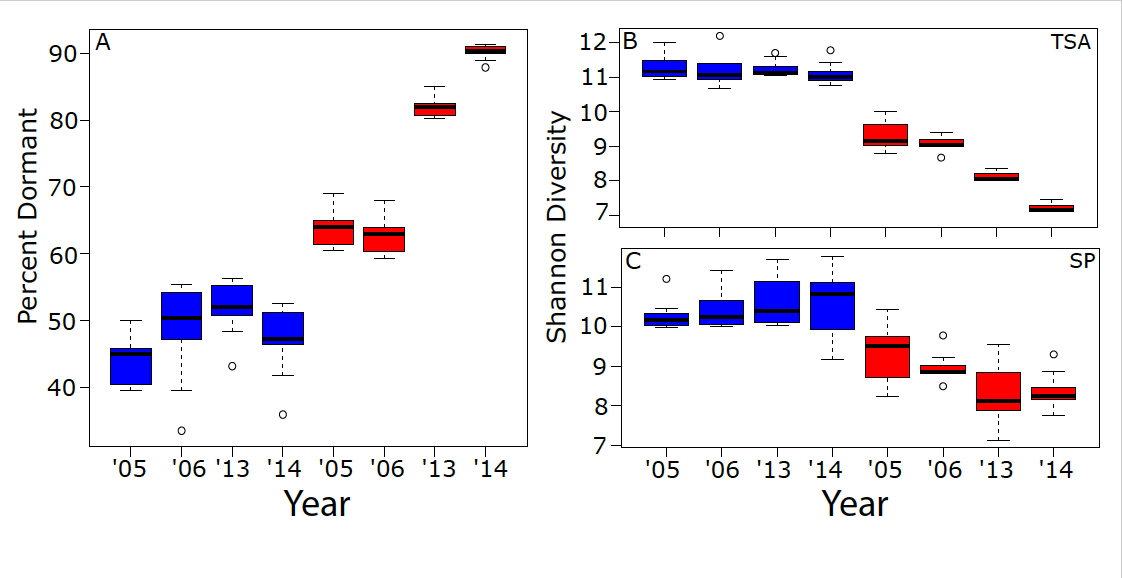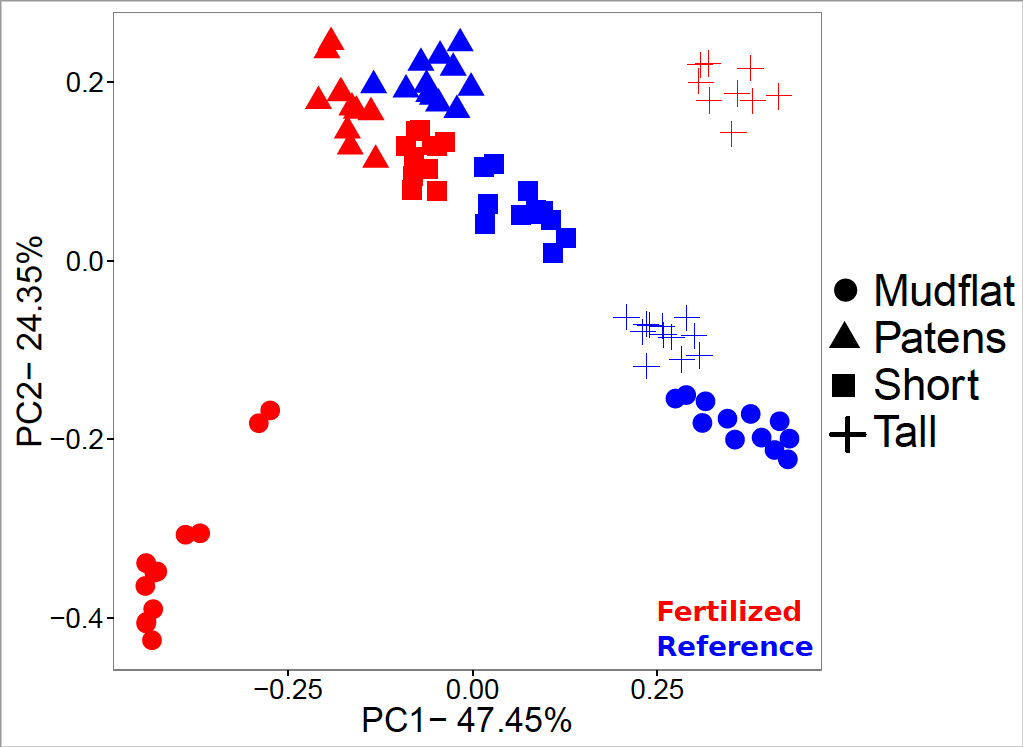Microbial response to perturbation in the TIDE nutrient enrichment experiment
 |
| Patrick Kearns collected marsh mud for future analysis |
Salt marshes are among the most productive ecosystems on the plant and afford numerous ecological services to coastal areas. One of the key services marshes provide is the removal of anthropogenic nitrogen (N) before it reaches coastal waters. Excess N inputs to coastal systems has dramatically increased since the first World War and recent evidence suggests that there may be a tipping point as to how much nitrogen a salt marsh can remove. Microorganisms including bacteria, archaea, micro-eukaryotes, and fungi play key roles in removing anthropogenic N as well as providing a plethora of ecosystem services to salt marshes. To determine the ecosystem level effects on salt marsh function the TIDE project was started in 2004 in the Plum Island Ecosystems Long-term Ecological Research Site. The TIDE project experimentally adds 70 µM nitrate to 2 creeks (Sweeney and Clubhead) on every tide from May to September. Two additional creeks (West and Nelson) receive no additional fertilizer and serve as reference creeks.
A key early finding of the TIDE project was a surprising resistance to change in the overall microbial community to excess nitrogen, as established by analysis of the 16S rRNA gene (Bowen et al. 2009, Bowen et al. 2011). To further investigate the role excess N plays in microbial ecology of salt marshes we hypothesized three things. (1) Salt marshes, due to their dynamic nature, possess a large presence of dormant taxa; (2) Nutrient enrichment will dramatically affect the active microbial community, despite no net change in the total community, which will lead to lower active metabolic output, resulting in altered microbial function. (3) Salt marsh fungal communities will also be strongly affected by nutrient enrichment.
Using high throughput sequencing of the 16S rRNA gene and 16S rRNA from samples we collected monthly through the growing season in the early years of fertilization (2005 and 2006) as well and in more recent years (2013, 2014) in both fertilized and reference marshes we show that even after a decade of fertilization there is still no affect of increased nutrient supply on the overall microbial community. However, our results (Kearns et al. 2016) also indicate that the active microbial community is dramatically altered by nutrient enrichment (Fig. 1). This surprising difference arises in part because the proportion of inactive cells increases dramatically because of fertilization and the diversity of active microbes goes down dramatically as well. We are currently using a combination of shotgun metagenomics, metabolomics, and metatranscriptomics to assess how these nutrient induced changes in the salt marsh microbial community translate to changes in ecosystem function. We will comprehensively analyze the metabolic capacity (metagenomics), metabolic output (proteins, secondary compounds, metabolites; metabolomics), and transcriptional activity (metatranscriptomics) in a suite of samples in both reference and fertilized marshes.
 |
| Figure 1. Stacked bar plots showcasing overall proportion of dormant bacteria over the study period (A) and the change in Shannon Diversity over time (B, C) in the references (blue) and fertilized (red) marshes over habitat types (TSA = Tall Spartina alterniflora, SP = Spartina patens) |
Finally, preliminary high throughput sequencing data of the fungal internal transcribed spacer region (ITS) region (Fig. 2) also shows a dramatic response of the fungal community to nutrient enrichment. We are currently analyzing more samples from different marsh habitats for differences in the fungal community and analyzing a suite of geochemical data to also see how these shifts in the fungal community correspond with changes in the environment.
 |
| Figure 2. Principle Coordinate Analysis (PCoA) of fungal ITS sequences |
These hypotheses will provide an extremely comprehensive look at short-term and long-term effects of nutrient enrichment, seasonality, and environmental conditions of the microbial ecology of New England salt marshes. Because microbes mediate nearly all major biogeochemical processes in the marsh, understanding the effects of environmental changes will be paramount to understanding how future global change will alter salt marsh ecosystem function. Because of their unique position as both a terrestrial grassland and a tidally influenced ecosystem, the results of this project will be broadly applicable to both terrestrial systems as well as marine systems and will better inform our knowledge about the effects of N enrichment on all aspects of microbial ecology.
Publications associated with this work:
Kearns, P. J., J. H. Angell, E. M. Howard, L. A. Deegan, R. H. R. Stanley, and J. L. Bowen. In Press. Nutrient enrichment induces dormancy and decreases diversity of active bacteria. Nature Communications.
Kearns, P. J., N. B. Weston, J. L. Bowen, T. Zivkovic, and M. A. Vile. 2016. Tidal Freshwater marshes harbor phylogenetically unique clades of sulfate reducers that are resistant to climate change induced salinity intrusion. Estuaries and Coasts 39: 981. doi:10.1007/s12237-016-0067-3